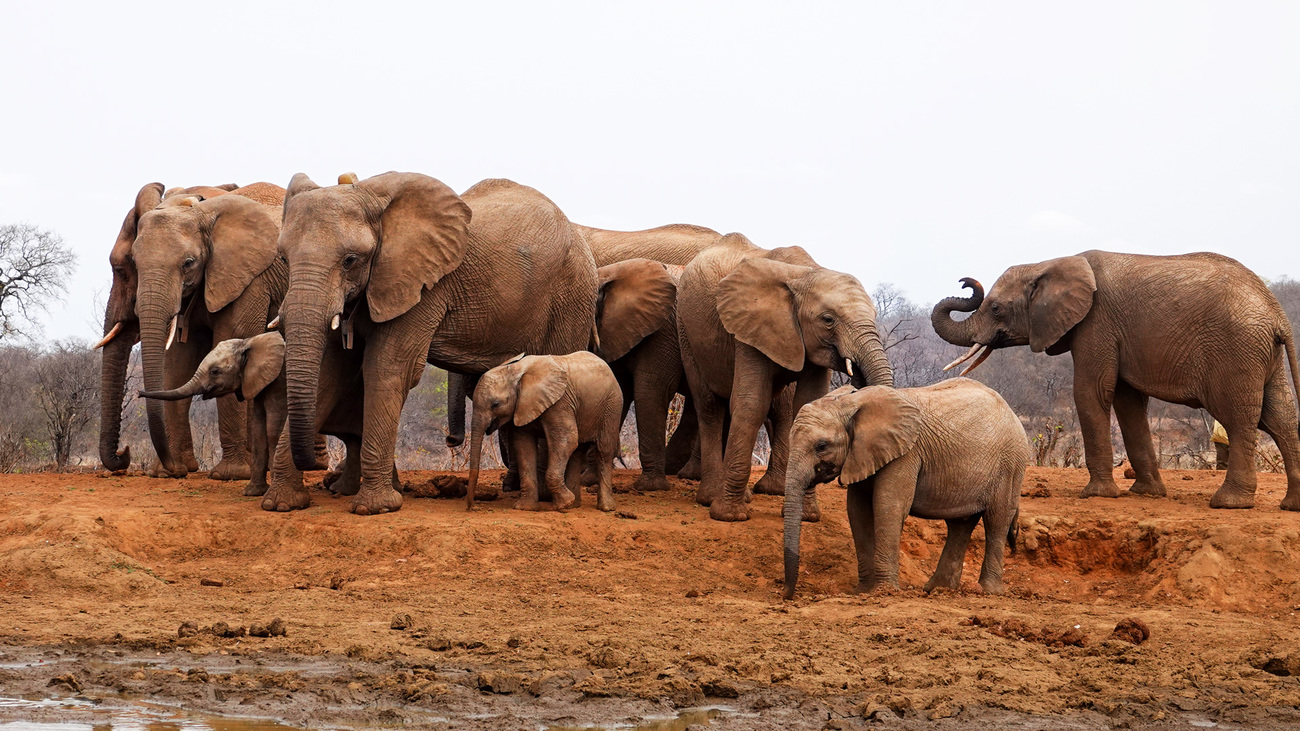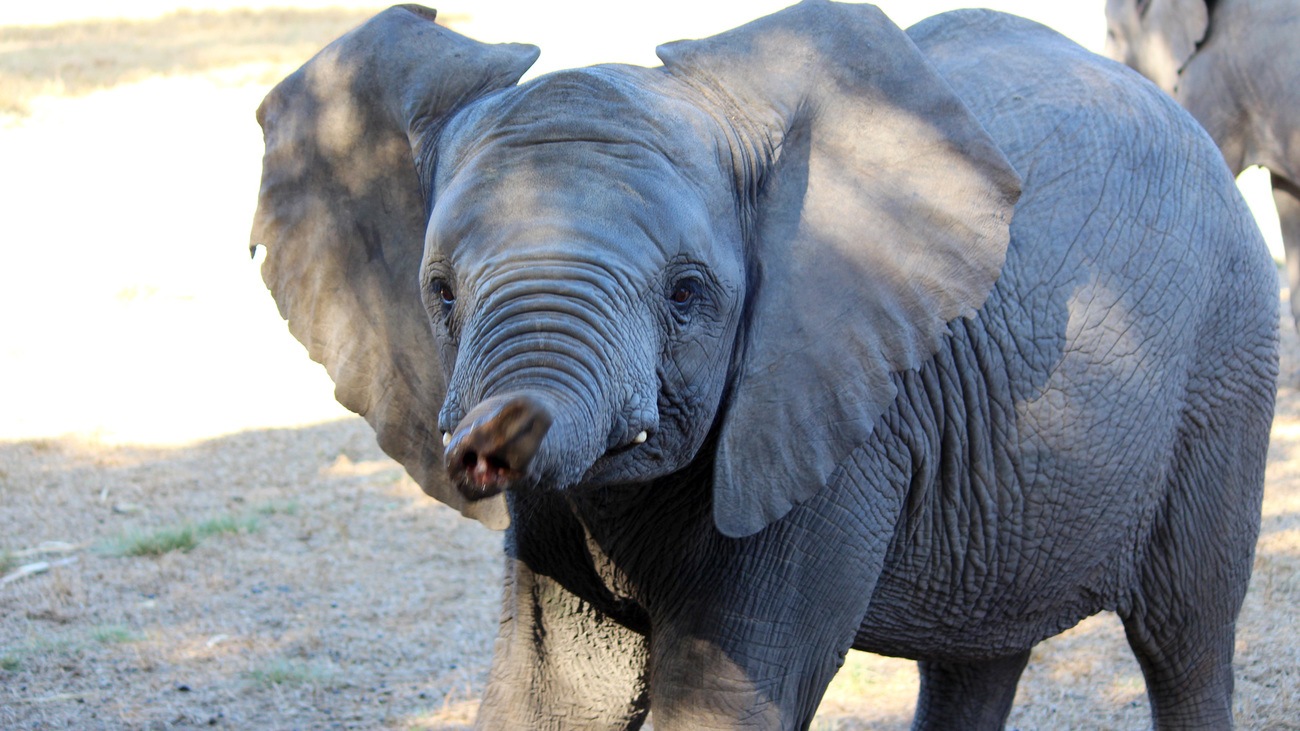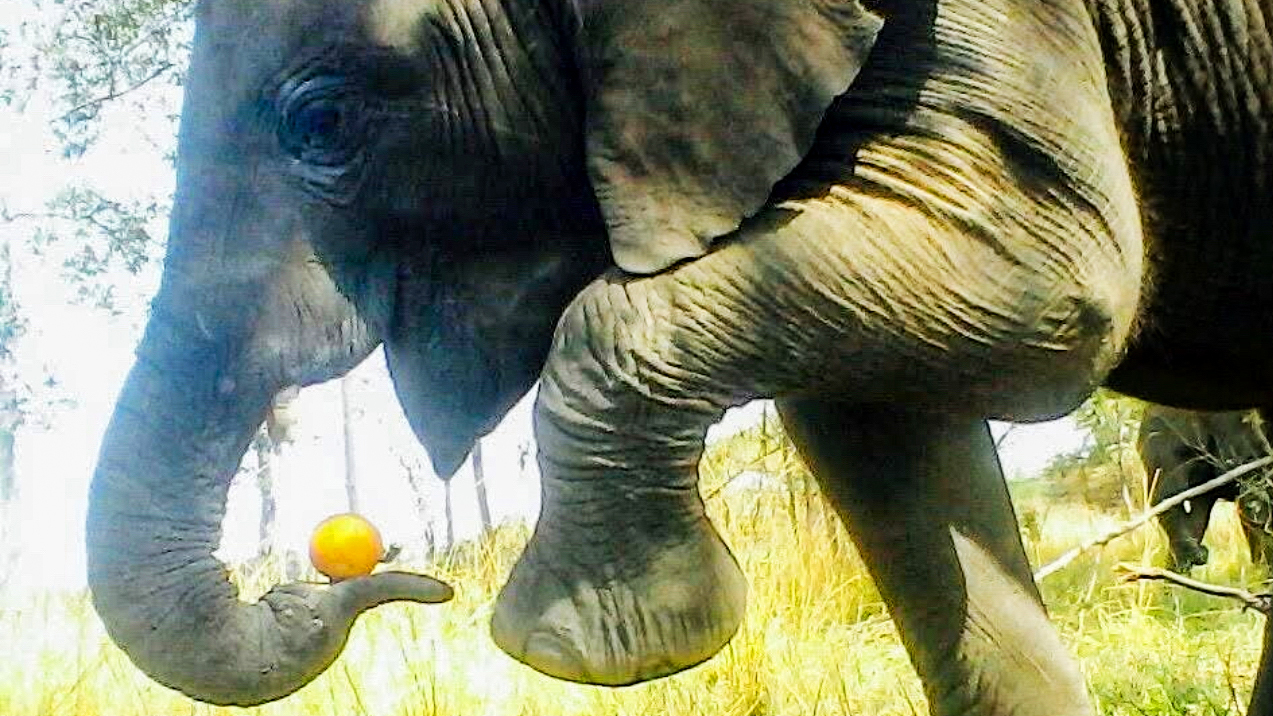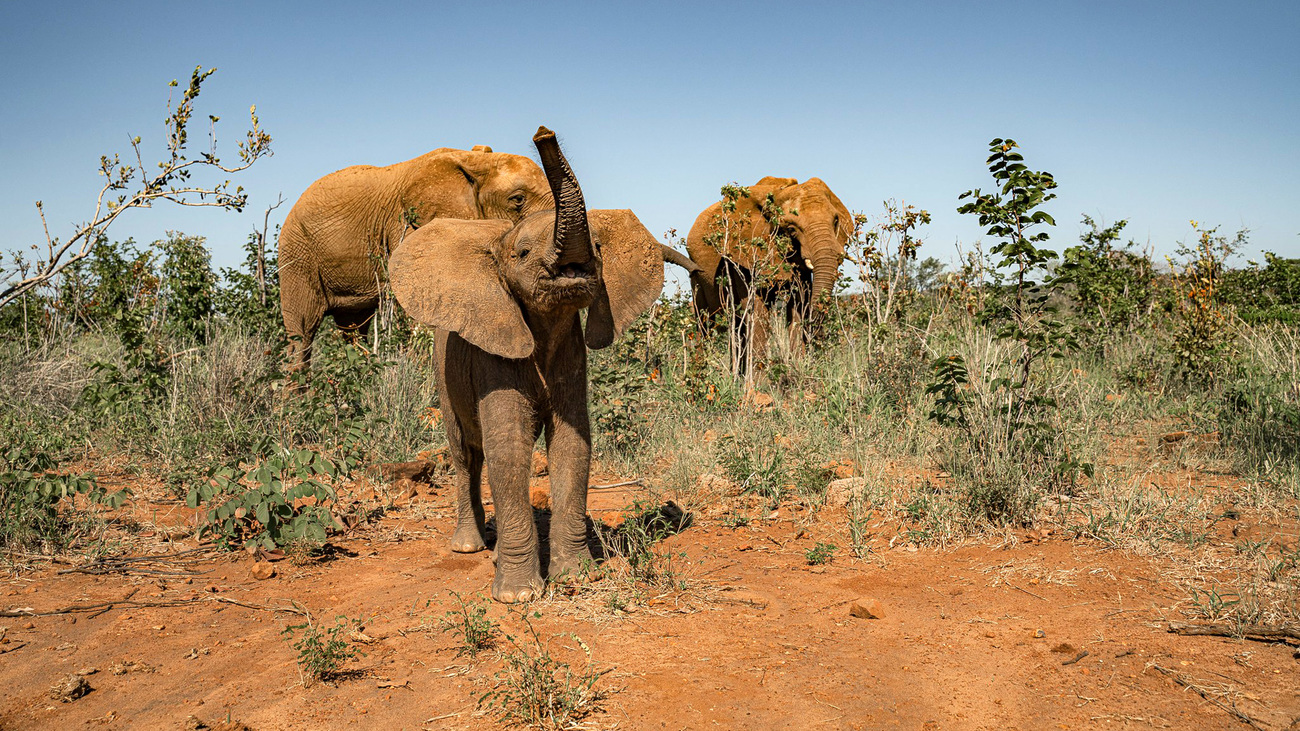Elephant Nursery and Landscape Project - Zimbabwe
Giving orphaned elephants a second chance at a life back in the wildAnnabelle: the elephant who bent the rules
Annabelle: the elephant who bent the rules

Rescued in July 2015 alongside fellow elephants Matabele and Kukurukura, Annabelle had been captured with the intent to be sent to a foreign zoo, a practice that has thankfully since ceased.
However, due to their physical imperfections, the zoos rejected these three elephants. What a blessing that turned out to be—now, these animals have a second chance at life in the wild.
Severely traumatised after being wrenched from their mothers, these elephants had a long road to recovery ahead. We were approached by Zimbabwe National Parks and Wildlife (ZimParks), who thought they would have the best shot at surviving and thriving at Wild is Life.
A serious setback
Annabelle is missing her entire tail and half of her trunk. We suspect this happened when she was a small calf due to an attack by lions or hyenas.

From the very first day we met Annabelle, we saw that she had a powerful character. She is suspicious of strangers and very loyal to and defensive of her herd. She certainly does not tolerate bad behaviour from other elephants!
However, seeing the tremendous damage to her trunk, we were very concerned that she would never be able to survive in the wild.
An elephant's trunk contains about 40,000 muscles, making it one of the animal kingdom’s most versatile and complex appendages. By comparison, the entire human body has only 600 muscles!
As an extension of the upper lip and nose, the trunk serves several critical purposes in the daily life of an elephant. These include:
- Breathing: Elephants don’t often breathe through their mouths, and they use their trunks like snorkels while swimming.
- Smelling: Elephants have incredible senses of smell—in fact, they have more scent receptors than any other mammal. They can even sniff food located miles away.
- Touching and feeling: The trunk is highly sensitive and is used for social bonding and investigating objects.
- Grasping and manipulating objects: They use their trunks to pick up food, break branches, and even wield tools like sticks to scratch themselves.
- Drinking and spraying water. The trunk can hold 8 to 12 litres of water, which the elephant sprays into its mouth for drinking or over its body for cooling.
- Communication: Elephants express their emotions through trunk gestures, such as raising it to signal curiosity, caressing a calf, or wrapping it around another elephant’s trunk in a display of affection.
- Defence and offence: The trunk can push, slap, and even throw objects at threats.
- Dust and mud bathing: Elephants spray dust or mud over their bodies with their trunks, creating a natural sunscreen and insect repellent.
Because of its complexity, an elephant calf spends years learning to control its trunk correctly. Baby elephants often struggle with coordination and are seen waving their trunks about in a hilarious fashion—it’s like a built-in toy.
We quickly noticed that Annabelle struggled to make use of her damaged trunk. She could not grasp objects, as she had no ‘fingers’ on the end of her trunk. She could not take in a large amount of water. She was unable to tear grasses from the veld. She could not swat insects on her rump. She could not throw much sand over her body, and she could not eat the soil for much-needed nutrients.
In short, her life seemed like it would be a constant struggle.
Overcoming the odds
However, to our astonishment, Annabelle showed extraordinary learning skills at a very young age. She could gently manoeuvre an orange onto her foot, then lift her foot to her mouth so that she could eat it. Her sense of balance was genuinely remarkable—and her appetite for oranges was insatiable!

As you can see in the video, Annabelle eventually learned to grasp a clump of grass and kick it to tear it up before putting it in her mouth. She always uses her right foot for this skill.
Annabelle was speedy in learning to use her trunk as a weapon. If displeased by one of us, she would slap upwards, and one would end up with a bloody nose. That trunk packs some punch.
She also developed a unique system of touch and communication. Though she copied other elephants in their visual cues, she was not keen on having her trunk wrapped by another elephant. It made her feel vulnerable.
She certainly had what I would describe as a certain sense of body dysmorphia—and, as a result, could sometimes be very angry, impatient, and a force to be reckoned with.
The one thing she still can’t do is lift quantities of game cubes into her mouth. Every morning and every evening, one of the carers at Panda Masuie stands with Annabelle at the barrier and physically puts the cubes into her mouth. It is often a lovely bonding time for her and her carers, but woe betide anyone unrecognised who should come near her food—that trunk becomes a weapon of nuclear proportions!
Compassion and leadership
Annabelle demonstrates tremendous compassion for other elephants who are also disabled. Take Nora, who is partially blind. Annabelle will not leave her side and guides Nora patiently through the bush, always waiting for her and never leaving her alone. They sleep together, they mother together, and they feed together. It is a beautiful relationship of like-minded souls.
Annabelle has also been particularly kind to Moyo, another female elephant who sustained injuries. However, she can also be incredibly fierce and protective when needed.
In 2018, Annabelle and five other elephants were translocated to Panda Masuie Forest Reserve, which was our first move of its kind. While she is not the oldest member of the herd, she is most certainly the leader of all the elephants at Panda Masuie.
A symbol of hope for her species
In a way we never imagined possible, Annabelle has spent numerous stints in the wild, sometimes as long as six weeks, interacting with wild elephants before returning to the bomas. Her powerful character epitomises the spirit of elephants.
In January 2024, we were surprised to discover that she had given birth. As she and all the other elephants had been in the wild for extended periods, we assumed and hoped that some of the females might have calves of their own. However, we did not know she was pregnant until the night she gave birth to a beautiful calf named Summer. This was the first time one of our rescued elephants gave birth, and it was indeed a full-circle moment for us.
Annabelle’s journey of motherhood
When Summer was born, Annabelle struggled to feed her for the first few days. The Panda Masuie team slowly and patiently assisted her. Initially, this required manually milking colostrum from Annabelle to feed Summer with a bottle.
Eventually, Summer latched on, and she has thrived ever since. Annabelle adores her baby but is very happy for an ‘auntie’ to provide childcare while she is busy feeding.

Annabelle is a testimony to hope and perseverance. She has overcome terrible physical and emotional trauma in her life. Despite this, she recovered, learned new skills and is now thriving.
We all adore and respect Annabelle. She is fierce and loving, strong and kind. She is a very important member of the herd and will continue to be a great leader and incredible individual for decades.
Annabelle has taught us how all is not lost when things look dire and impossible. We have much to learn from elephants.
Giving Day for Elephants 2025
What if the whole world joined together for 24 hours to show our support for one of the world’s most iconic and endangered animals? Giving Day for Elephants is our chance.
This year, on 15 April, join IFAW to support efforts to heal and reconnect fragmented habitats, prevent human-wildlife conflict, and preserve the biodiversity that is so important for animals, people, and the planet.
Related content
Every problem has a solution, every solution needs support.
The problems we face are urgent, complicated, and resistant to change. Real solutions demand creativity, hard work, and involvement from people like you.